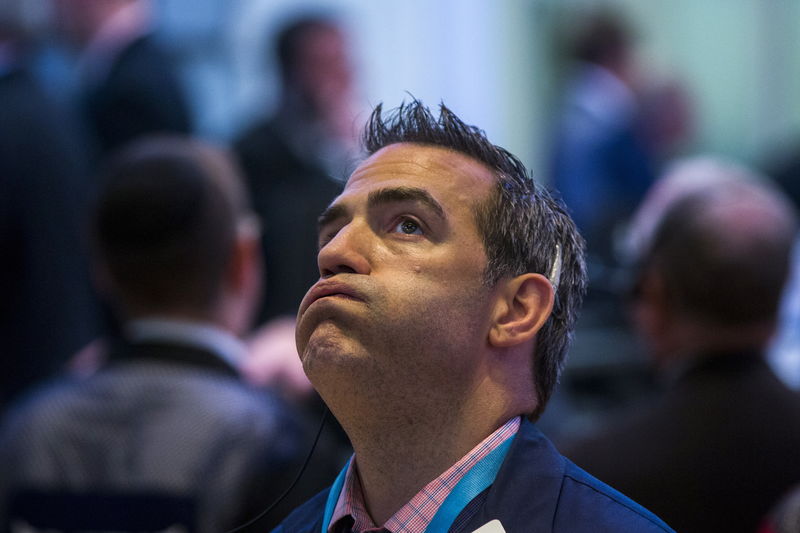 © Reuters.
© Reuters.
By Yasin Ebrahim
Investing.com – The S&P 500 fell Thursday, wrapping up its worst quarter in two years as investors digested further data pointing to red-hot inflation and President Biden's plan to release a record amount of emergency oil supplies to curb rising energy prices.
The S&P 500 fell 1.4%, the Dow Jones Industrial Average slipped 1.6%, or 550 points, the Nasdaq fell 1.5%. The three major averages were down about 5.2%, 4.8%, and 10%, respectively, for the quarter.
Biden said the U.S. planned to release 1 million barrels of oil per day from strategic reserves over several months to stem the rise in energy prices. In total, up to 180 million barrels are set to be released over six months, which if realized would be largest “release from the stockpile since it was created in 1975,” Stifel said in a note.
Oil prices fell more than 6% and were further pressured by a decision from OPEC and allies including Russia to stick with plans to add 430,000 barrels per day from May, shrugging off calls from world leaders to ramp-up production.
The latest economic data point to further evidence of the impact of energy and other commodity prices that have pushed inflation well above the Fed’s 2% target.
The Federal Reserve's preferred inflation measure, the personal consumption expenditures (PCE) price index excluding food and energy, rose 5.4% in the 12 months through March, the fastest gain since April 1983.
In the wake of red-hot inflation, Wall Street experts see the Fed following up its 25-basis-point rate hike with more aggressive hikes later this year.
Morgan Stanley, JPMorgan, and Goldman Sachs are forecasting the Fed to hike rates by 50 basis points in May and June.
The bets on aggressive rate hikes ahead have many worried about the Fed causing a recession. Bond markets have been quick to price in the risk of recession. Early this week, the 10-2 Treasury yield curve briefly inverted following weeks of flattening.
Bank stocks, which led the weakness on Thursday, remain on course to post a loss for the quarter as flattening in the yield curve dents net interest margin, limiting banks’ profit from lending.
State Street (NYSE:STT), Signature Bank (NASDAQ:SBNY), and Bank of America (NYSE:BAC) were the biggest decliners on the day down more than 4%.
Tech, meanwhile, was also in the red on the final day of the first quarter, as investors appeared to take profits.
Chip stocks were under pressure following a 8% rout in Advanced Micro Devices (NASDAQ:AMD) after Barclays downgraded the chipmaker to underweight from equal-weight cut its price target on the stock to $115 from $148, citing “cyclical risks across several end markets.”
In earnings news, Walgreens Boots Alliance (NASDAQ:WBA) fell 6% as concerns about slowing growth ahead overshadowed quarterly results that beat on both the top and bottom lines.
The worst quarter in two years for stocks comes a day ahead of monthly nonfarm payrolls data expected to show the economy created 490,000 jobs in April.

